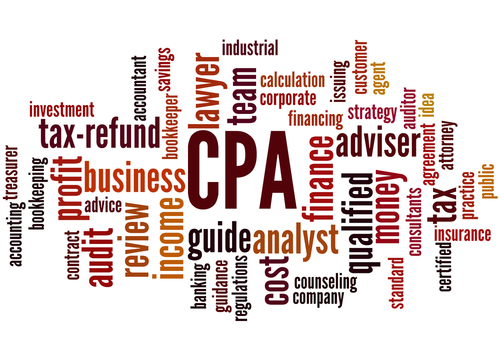
You may have heard of different types of financial statements, such as the Balance sheet, Income statement, and Statement of change in equity. While all of them contain useful information, they are not all created equally. Each one is different in the way it is used. Let's explore the different types statements and their use to help us understand our business. Ultimately, they all provide information you can use to make better decisions.
Income statement
An income (or balance), sheet is one of four types of financial statements. It records the money flowing into and out of the company. The consolidated balance sheet is another type that details the company's assets and liabilities. It also shows stockholders equity which shows the book value of shareholders' stock. These three financial statements are useful for creditors and investors to understand the company's performance better and forecast its future.
An income statement also includes expenses. These expenses include costs related to providing goods or services. The cost to sell goods (COGS) is the cost of materials or labor. Although they are not directly related to production, general administrative costs are essential to the organization. The income statement includes depreciation, amortization, and other costs related to company assets. Also called net income, or net profit, the total of these costs, and is what the company realizes in profits or losses.
Balance sheet
The company's balance sheet is its basic financial statement. It provides investors with an overview of company assets and liabilities. A company's cash position is considered an asset. A company might have liquid assets other than cash. These include accounts receivables and inventory. Other assets, such intangibles, equipment, and inventory, might not be listed on a balance sheet.
The balance sheet is the most basic of all financial statements, and the first to be reviewed. This document lists the organization's assets as well as its liabilities. Listing assets is based on their expected turnover. Liabilities are listed next, with current assets being listed first. Then fixed assets (e.g. a building) are listed. These assets are subtracted from the total amount for current assets. After that, the two-part division is done: current and longer-term. It is important to know the differences between these two when analysing a company's assets or liabilities.
Statement of equity change

The Statement of Change in Equity in the financial statements is a section that reconciles both the closing and the opening balance sheets. This statement also explains how the income statement and balance sheets relate. It includes all transactions that were not recognized in the income statement, including any withdrawal of equity or changes in accounting policies or corrections made in the previous period. The following steps will help you prepare the Statement of Change in Equity. Make sure that all balances remain consistent and correct.
The statement showing equity change over time shows how equity of owners has changed. It also shows equity changes due to bonus payments, new monetary investment, holder withdrawals, or revisions in fixed asset values. Statement of Change in Equity shows the links between the income statement, balance sheet and equity. This is useful information for investors and stockholders.
Notes to financial statements
Financial statements are not complete without the accompanying notes. The notes provide additional details not found in the financial statements such as revenue and payment terms. The notes are usually prepared on a "going-concern" basis. This assumes that the company will continue its operations and be able meet its obligations. The notes may include additional information, such as details about the company's risks. You may also find information about possible future vulnerabilities in the notes.

The information in the notes to financial statements are critical for assessing the financial position of the company. Intangible assets are assets that are not physically tangible, such as trademarks and patents. The notes also explain how the financial statements were consolidated. This consolidation is performed to verify the financial statements from all subsidiaries in a company. Footnotes explain how consolidation was accomplished. This provides a better understanding about a company's financial performance.
FAQ
What is the average time it takes to become an accountant
Passing the CPA examination is essential to becoming an accountant. Most people who want to become accountants study for about 4 years before they sit for the exam.
After passing the test, one must work as an associate for at least 3 consecutive years before becoming a certified professional accountant (CPA).
What should I expect when hiring an accountant?
Ask questions about the qualifications and experience of an accountant when you are looking to hire them.
You want someone who's done this before and who knows the ropes.
Ask them for any specific skills or knowledge that they might have that you would find helpful.
Make sure that they are well-respected in the local community.
What is an auditor?
An audit is an examination of the financial statements of a company. Auditors examine the accounts of a company in order to make sure everything is correct.
Auditors look for discrepancies between what was reported and what actually happened.
They also check whether the company's financial statements are prepared correctly.
What does an auditor do?
An auditor looks for inconsistencies between the information given in the financial statements and the actual events.
He confirms the accuracy and completeness of the information provided by the company.
He also confirms the accuracy of the financial statements.
How do accountants function?
Accountants work with clients to ensure they make the most out of their money.
They are closely connected to professionals such as bankers, lawyers, auditors, appraisers, and auditors.
They also assist internal departments such as human resources, marketing, sales, and customer service.
Balanced books are the responsibility of accountants.
They calculate the amount of tax that must be paid and collect it.
They also prepare financial statement that shows how the company is performing.
How do I know if my company requires an accountant?
Many companies hire accountants after reaching certain levels. If a company has $10 million annual sales or more, it will need one.
However, there are some companies that hire accountants regardless if they have a small business. These include small firms, sole proprietorships, partnerships, and corporations.
It doesn't really matter how big a company is. Only what matters is whether or not the company uses accounting software.
If it does then the company requires an accountant. It doesn't if it doesn't.
What is bookkeeping?
Bookkeeping is the practice of maintaining records of financial transactions for businesses, organizations, individuals, etc. It also includes the recording of all business-related income and expenses.
Bookkeepers keep track of all financial information, including receipts, invoices bills, payments, deposits and interest earned on investments. They prepare tax returns, as well as other reports.
Statistics
- Given that over 40% of people in this career field have earned a bachelor's degree, we're listing a bachelor's degree in accounting as step one so you can be competitive in the job market. (yourfreecareertest.com)
- According to the BLS, accounting and auditing professionals reported a 2020 median annual salary of $73,560, which is nearly double that of the national average earnings for all workers.1 (rasmussen.edu)
- BooksTime makes sure your numbers are 100% accurate (bookstime.com)
- The U.S. Bureau of Labor Statistics (BLS) projects an additional 96,000 positions for accountants and auditors between 2020 and 2030, representing job growth of 7%. (onlinemasters.ohio.edu)
- Given that over 40% of people in this career field have earned a bachelor's degree, we're listing a bachelor's degree in accounting as step one so you can be competitive in the job market. (yourfreecareertest.com)
External Links
How To
How to Become An Accountant
Accounting is the science of recording transactions, and analysing financial data. It involves the preparation and maintenance of various reports and statements.
A Certified Public Accountant is someone who has passed and been licensed by the state board.
An Accredited Financial Advisor (AFA), is an individual that meets certain criteria established by American Association of Individual Investors. A minimum five-year investment history is required in order to be an AFA according to the AAII. They must pass a series exam to verify their understanding of accounting principles.
A Chartered Professional Accountant, also known as a chartered accountant or chartered accountant, a professional accountant who holds a degree from a recognized university. CPAs must meet specific educational standards established by the Institute of Chartered Accountants of England & Wales (ICAEW).
A Certified Management Accountant (CMA) is a certified professional accountant specializing in management accounting. CMAs need to pass exams administered through the ICAEW, and must continue education requirements throughout their careers.
A Certified General Accountant or CGA member of American Institute of Certified Public Accountants. CGAs are required to take several tests; one of these tests is known as the Uniform Certification Examination (UCE).
International Society of Cost Estimators has awarded the certification of Certified Information Systems Auditor. Candidates for the CIA certification must complete three levels, which include coursework, practical training and a final assessment.
Accredited Corporate Compliance Official (ACCO), a title granted by ACCO Foundation and International Organization of Securities Commissions. ACOs must have a baccalaureate in finance, business administration or public policy. They also need to pass two written and one oral exams.
The National Association of State Boards of Accountancy gives the credential of Certified Fraud Examiner (CFE). Candidates must pass three exams and obtain a minimum score of 70 percent.
The International Federation of Accountants (IFAC) has accredited a Certified Internal Auditor (CIA). Four exams must be passed by candidates to receive certification as an Internal Auditor (CIA). They will need to pass topics like auditing, compliance, risk assessment and fraud prevention.
American Academy of Forensic Sciences (AAFS) designates an Associate in Forensic Account (AFE). AFEs should have a bachelor's degree from an accredited college, university or other educational institution in any area of study.
What is the job of an auditor? Auditors are professionals who conduct audits of organizations' internal controls over financial reporting. Audits may be conducted on a random basis, or based in part on complaints made by regulators.